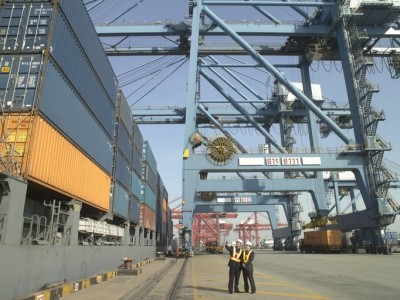Changes to Lysine supply in the EU: Be ready for the transition

The responsibility to comply with the rules lays of course on the supplier, but according to the EU General Food Law, the user is responsible as well. “No-one can hide behind the supply chain,” said Jans.
A critical element of the new authorization package is that it is now specified from which microorganism strain each form of lysine can be manufactured, said the consultant.
The authorized strains are proprietary - in total, six global producers share the various authorizations granted, said Jans. Those producers are now harvesting the fruit of their applications, which they tabled and supported throughout the EFSA assessment over the last 10 years, he noted.
Smooth transition
The new regulation includes provisions intended to facilitate a smooth transition, for both Lysine suppliers and for the users, he said. The new authorizations have been in place since December 2019, but Lysine (preparations or premixtures) produced according to the previous regulation can still be placed on the EU market until June 18, 2020, he added.
According to the EU law, this implies that the product must physically exist at the time of the transaction, said Jans.
As far as compound feed is concerned, companies can integrate the previous Lysine forms if the feed is manufactured and labelled before December 18, 2020 and December 2021 for non-food producing animals, he said.
The case of Lysine sulphate is a bit more restrictive, said Jans.
“In this case the former authorization was already restricted to production through fermentation with Corynebacterium glutamicum. L-lysine sulphate produced with a microorganism species other than Corynebacterium glutamicum (e.g. Escherichia coli) cannot benefit from the transition regime, and, in fact, is illegal, except if produced with Escherichia coli strain CGMCC3705 that was duly authorized through Regulation (EU) 2017/439).”
Summary table of Lysine authorizations under Regulation 1831/2003 and comparison to previous ones under Directive 88/485/EEC
Old authorization | New authorization | |
Directive 88/485/EEC | Regulation (EU) 1831/2003 | |
| (EU) Regulation 2017/1145 |
|
3.2.1 L-Lysine, technically pure (L-Lysine min 98%) | Withdrawn authorization |
|
| (EU) Regulation 2019/1964 |
|
3.2.2 Concentrated liquid L-Lysine (base) (L-Lysine min 60%) | 3c320 L-lysine base, liquid (L-Lysine min 50%) | Produced by fermentation with Escherichia coli FERM BP-10941 FERM BP-11355 |
|
| Produced by fermentation with Corynebacterium glutamicum KCCM 11117P NRRL B-50547 NRRL B-50775 KCCM 10227 |
| (EU) Regulation 2019/1964 |
|
3.2.3 L-Lysine-monohydrochloride, technically pure (L-Lysine min 78%) | 3c322 L-lysine monohydrochloride, technically pure (L-Lysine min 78%) (Max moisture 1.5%) | Produced by fermentation with Escherichia coli FERM BP-10941 FERM BP-11355 CGMCC 3705 CGMCC 7.57 |
|
| Produced by fermentation with Corynebacterium glutamicum NRRL B-50547 NRRL B-50775 KCCM 11117P KCCM 10227 |
| (EU) Regulation 2019/1964 |
|
3.2.4 Concentrated liquid L-Lysine-monohydrochloride (L-Lysine min 22.4%) | 3c321 L-lysine monohydrochloride, liquid (L-Lysine min 22%) (L-Lysine in dry matter min 58%) (max moisture 66%)
| Produced by fermentation with Escherichia coli FERM BP-10941 FERM BP-11355 |
| Regulation (EU) 2019/1964 |
|
3.2.5 L-Lysine-sulphate Produced by fermentation with Corynebacterium glutamicum (L-lysine min 40%) | 3c324 L-lysine sulphate (L-Lysine min 52%) (Max sulphate 24%) | Produced by fermentation with Corynebacterium glutamicum KCCM 10227 DSM 24990 |
| Regulation (EU) 2017/439 | |
| 3c323 L-lysine sulphate (L-Lysine min 55%) (Max sulphate 22%) (Max moisture 4%)
| Escherichia coli CGMCC 3705 |
Traceability checks
Compared to the previous situation, the conditions of use and labelling requirements have evolved, he said.
“One of the important compliance aspects then relates to the microorganism strains. This traceability information must be secured and communicated through the value chain. Although it is not a formal labelling requirement, some producers have already decided to include the strain identification (deposit code) into their product label as a part of the product identity.
“The June 18 deadline is approaching rapidly; it is advisable for any concerned supplier/user to take action to secure future supplies.”
Additional traceability checks might be secured as suggested in the toolbox below, said the consultant.








